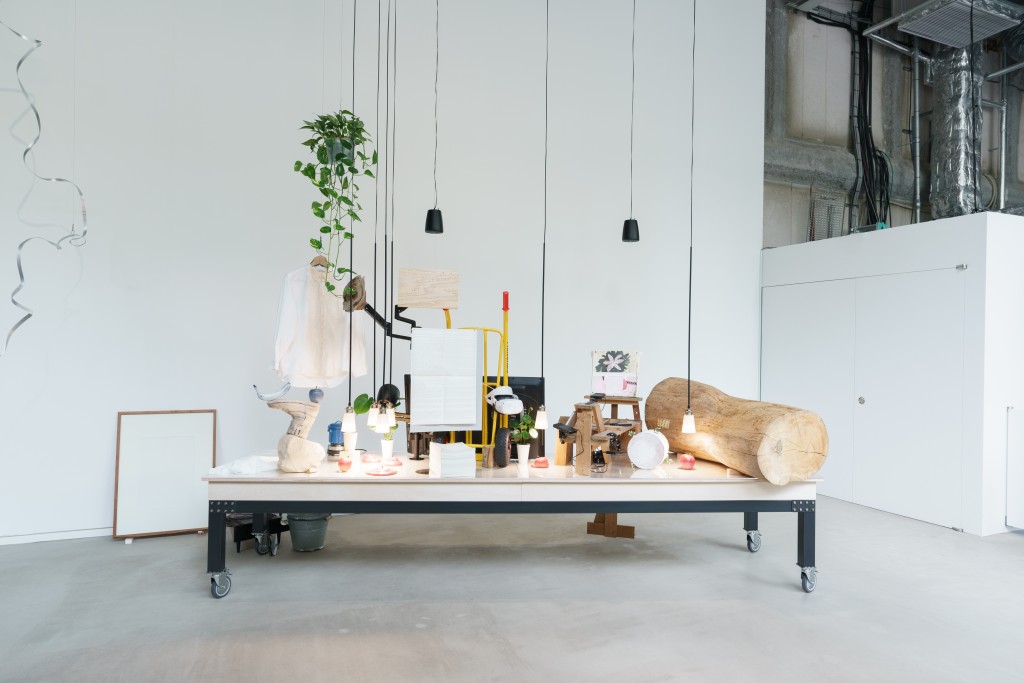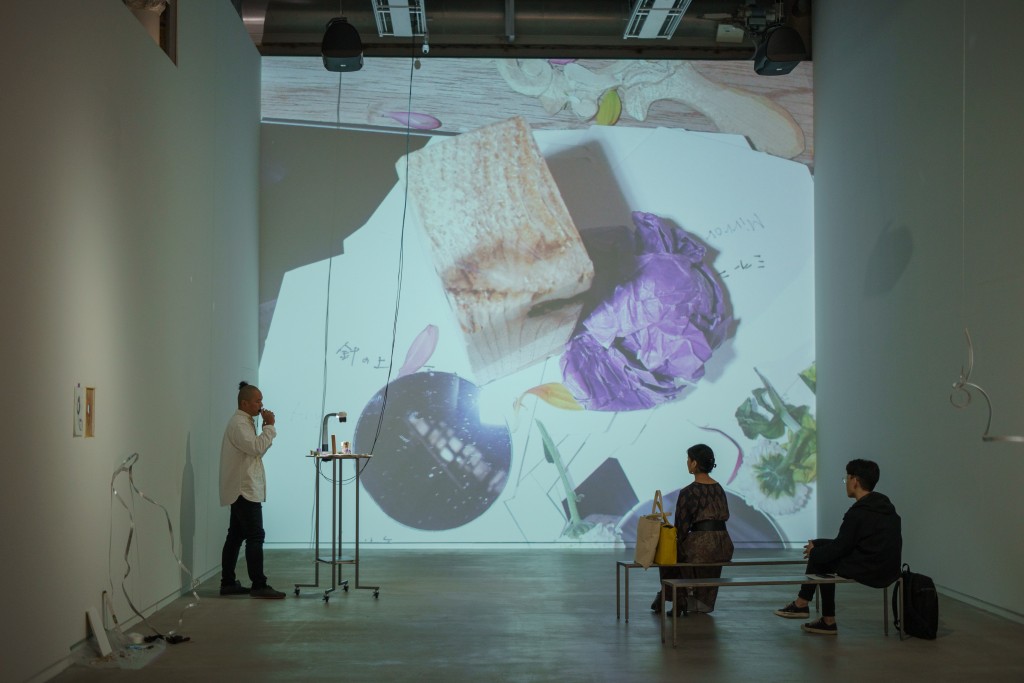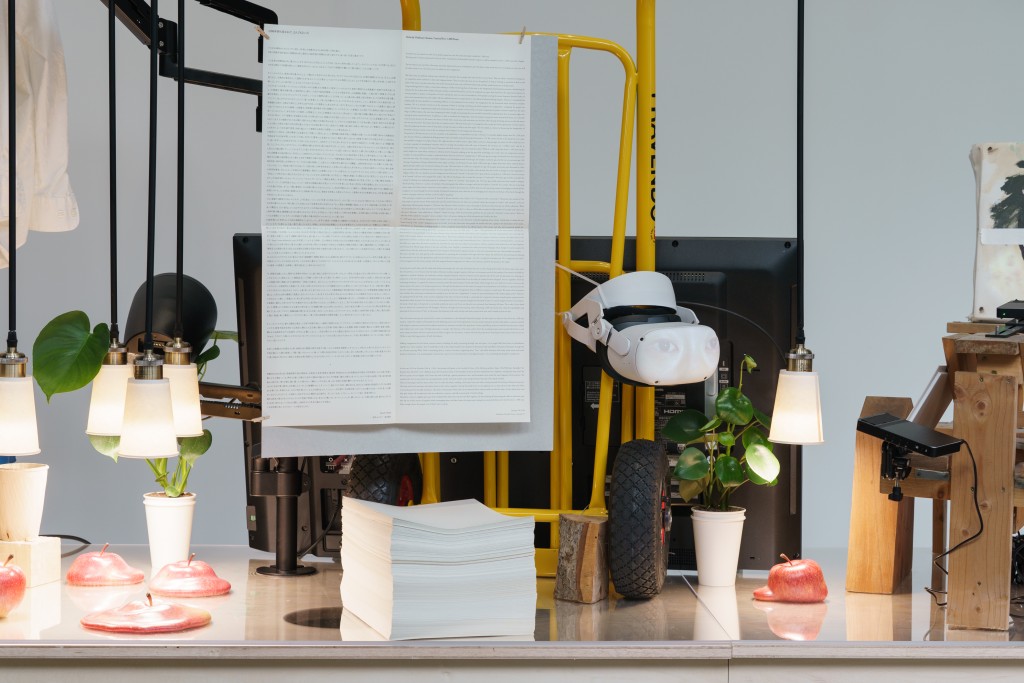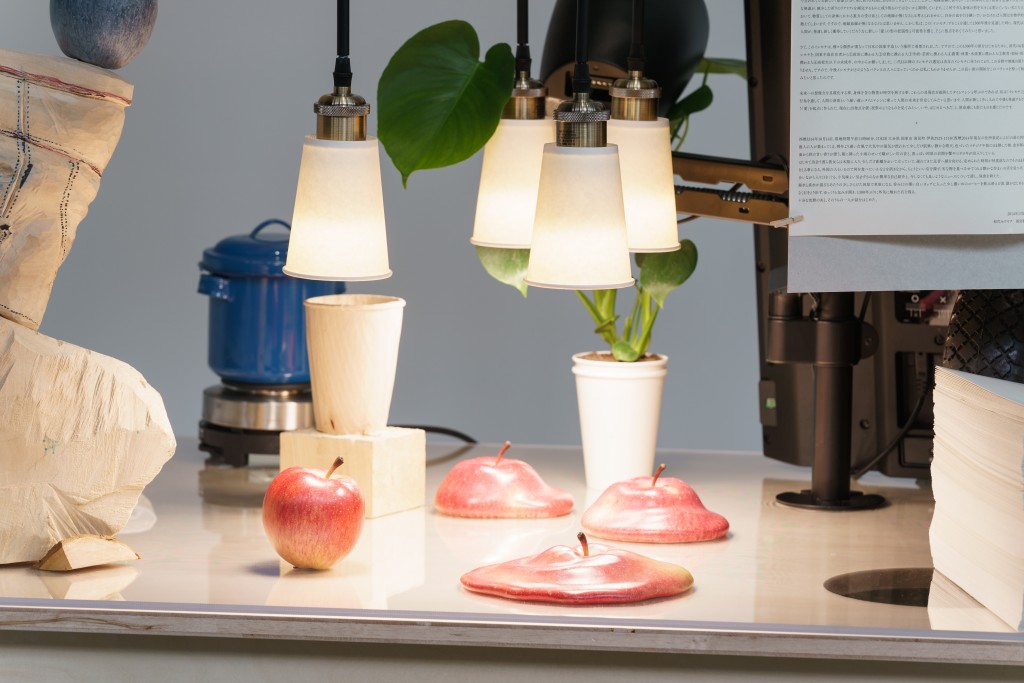To shift the limits of the world (even if only a little)—An attempt by Yousuke Amemiya

The area surrounding Tokyo Station is transforming rapidly. The entire neighborhood is overflowing with artful designs, and it is as if people swarm throughout a giant artwork that is perpetually in progress. With every little thing meticulously designed, modern beauty seems to have a firm grasp on our daily life.
Is this environment favorable for artists, or is it stifling? Works of art become “art” once they are framed as such, having been extracted from everyday life in some shape or form. On the other hand, provided the right framework, anything can be considered art. It has been seventy years since John Cage demonstrated this by performing four minutes and thirty-three seconds of silence on stage, and 100 years since Duchamp exhibited a urinal. The act of art making is always surrounded by risk.
Outside the Yaesu exit, there is a high-rise building adjacent to the south side of the station called the GranTokyo South Tower. The first floor of this glass tower is a cafe, the inside of which is visible from the street. The cafe is also an art center called BUG, and on the day of my visit there was a solo exhibition by the artist Yousuke Amemiya.
It was an “open” exhibition. In other words, it was neither closed-off nor enclosed. When we think of exhibitions, they typically take the form of a walled exhibition space where we are confronted with paintings in frames and objects installed on plinths. In such environments, we receive art along with the meta-message “this is art.” From the moment I stepped into the venue, it was clear that this strangely titled exhibition, A Q & I, was trying to provide a different kind of experience.
There was a casualness about the place. In addition to the ease of the space itself, with the cafe counter leading directly into the art center, the exhibition layout was straightforward, appearing almost like a general store with works of various types, materials, and forms crowded on plinths, making it difficult for each piece to convey their individuality as “works.”
Is the artist hesitating to decisively assert that the works are works of art? The works seem to recede into the background. However, the artist is in the space, actively conveying what he means to visitors in his own words. I sense, in a way, that the nature of art is changing drastically.

On the occasion of the exhibition Roppongi Crossing 2010: Can There Be Art?,
Amemiya said the following in an interview: “That is a good question because it asks something, and if a question can be answered, it probably isn’t a good question.”
Artwork is neither possible nor impossible. In any case, an artist’s seriousness can be found in how they move forward with hesitation, asking themselves “is this art, too?” rather than declaring that “this is art.”
From this perspective, the exhibition’s strange Japanese title, 雨宮宮雨と以, begins to make sense. According to the official website, it is pronounced Amemiya-kyū-to-i(雨宮宮雨と以), and can be interpreted as meaning “Amemiya’s Question.” It may also describe Amemiya and ayimemA(雨宮/宮雨)(the artist’s mirror image) heading toward the starting point of things. It’s also interesting to interpret “to-i” as the Japanese word for “gutter,” and to imagine rainwater flowing through the gutter and seeping into the land of mirrors.
This mental image makes me notice a quality of the artist seeping through the exhibition. Words dance across a hanging shirt and on a piece of paper stuck to an oil painting. Mixed in among the displayed work is the artist’s explanation of his project, printed in small font on A2 paper in both Japanese and English. Thin metal strips carrying words stretch and twist throughout the exhibition space. Words even come out of a projector.
Still, the exhibition has a reserved quality. It isn’t ego-centric. What emerges from Amemiya is not the voice of a loud 20th-century artist associated with one of the many “-isms.” Instead, he has a tendency to subdue his own intent and exist in harmony with his surroundings.
For example, in the exhibition trailer he says, “You shouldn’t focus too hard and immerse yourself.” When stepping into the river to catch a fish, you shouldn’t go in thinking, “I’m going to catch one.” The first consideration should be to understand one’s place in the full constellation of nature. I was a bit surprised to hear such words from an artist. These are the words of a hunter or craftsman.

So what is Amemiya trying to pin down? One of his most notable works is Perfectly Ordinary Stones, Carried For 1,300 Years (2014), a conceptual artwork consisting of the following instructions: “Six small stones are carried, one each, by six people, passed on every five years and simply carried for 1,300 years.” It is also a performance piece, and six second-generation “stone carriers” are still acting out their duties.
A visit to ishimochi.com helps to expand the idea further. The website is still sparse. Blank spaces awaiting the names of 258 generations of future participants continue until the end of the project, 3314 A.D. As I scroll down, I wonder how long the Web will be a valid method for documenting this project. Will there be an extraordinary natural event on a global scale that will make it difficult to even pass along the stones? When a giant comet hits the earth, will one of the stones that started its journey in the Kunisaki Peninsula in 2014 reach as far as the moon?
The point of this work is to encourage the imagination to flow outward. The insistence on using “ordinary stones” prevents the work from becoming focused on the form of the object. The focus of Amemiya’s art is neither the physical object nor the action of carrying it around. If I had to define it, I would say that the focus is “time,” the passing of which does not necessarily guarantee the continuation of the stone carrying. We also become aware of the unimaginable people distributed throughout the temporal expanse of 1,300 years. There is tremendous hope in this vision of a chain of unknowable people completing a relay and reuniting in a single place in 3314 A.D.
There is also the ethics of making art that doesn’t simply end once it is released into the world as a completed work. Amemiya assigns himself, and later his children, the role of “manager” of the stone carriers, so that careful monitoring will prevent the project from failure due to inattention, laziness, and forgetfulness. Yes, this endeavor is loftier than one might assume.
One problem that remains is how to prevent the intentions behind this artistic act from being overshadowed over time. Let us imagine 400 years into the future. Does the 83rd generation of stone carriers, entrusted with stones from the 82nd generation, see the person who initiated this ritual as a kind of god? What if society in 2424 is far more religious than today, and the mythical origins of the act of stone carrying leads to a spread of followers and the creation of a cult?
Is it wicked to imagine such a thing, when the humble artist is at the exhibition venue every day, talking to visitors to try to stop his work from receiving the authoritative label of “art?”

Let’s turn our attention back to the exhibition. Multiple apples, where the bottom halves appear to have melted into mush like Dali’s clock, are on display. This is a series that has continued since 2004. The time and effort required for these pieces is evident in the ongoing production process that goes on behind the scenes. These apples are made from apple wood. Amemiya is committed to a process in which the apples are cut from apple wood, sculpted, polished, and painted a realistic color and texture with the tip of a brush. It is man’s attempt at clumsily replicating what a living apple does so gracefully in its life. He tries desperately, albeit carefully, to catch up, using every technique humanly possible. But to what end?
Amemiya says this: “This real world of ours, which most people take for granted, is endlessly interesting to me. I have been creating works that shake up the commonplace and universal.”
“An apple,” a representative example of something that “most people take for granted,” is more interesting than “an ordinary stone” in that it is alive, likely making it a more daunting source material. It must be hard to shake up. However, Amemiya does not aim to succeed. In A Q & I, the land of mirrors that he attempts to seep into lies beyond the limits of a world described through language. It is a world that, as Wittgenstein put it, “Whereof one cannot speak, thereof one must be silent.” There, it seems Amemiya is working silently to shift the limits of the world, even if only a little.

